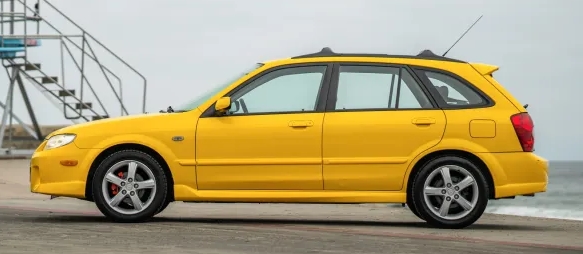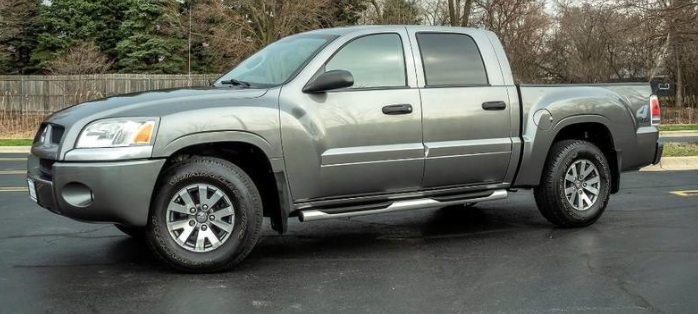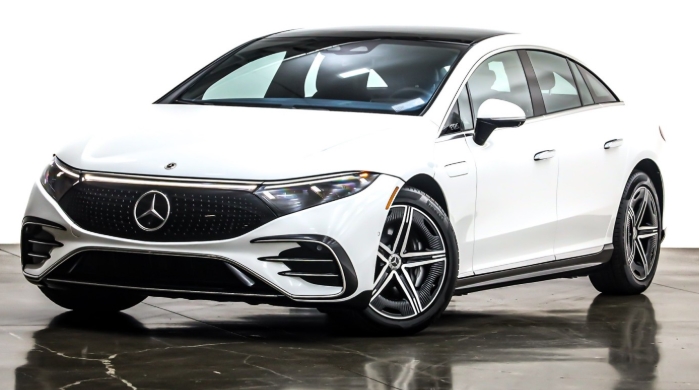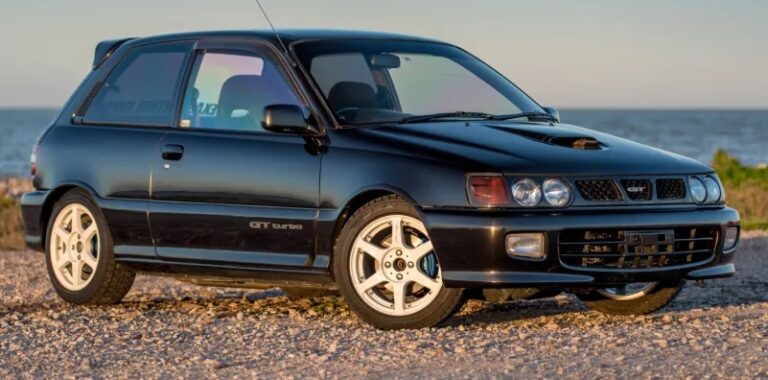The Evolution of the Mazda Protege
The Mazda Protege is a compact car that played a significant role in Mazda’s lineup from the late 1980s through the early 2000s. Known for its reliability, sporty handling, and affordability, the Protege became a popular choice among drivers seeking a practical yet enjoyable vehicle. Over its production span, the Protege underwent multiple generations, each bringing updates in design, technology, and performance. This article provides a detailed overview of the Mazda Protege’s evolution, including its production years, models, and trim levels.
First Generation (1989–1994): The Origins of the Protege
Production Years: 1989–1994
The Mazda Protege was introduced in 1989 as a replacement for the Mazda 323 in North America, though in other markets it was marketed as the Mazda Familia or 323. The first-generation Protege was built on the Mazda BG platform and was offered as a compact sedan, hatchback, and, in some markets, a wagon.
Design and Features:
- Compact dimensions with a focus on affordability and efficiency.
- Front-engine, front-wheel-drive layout.
- Engines included a 1.5-liter carbureted four-cylinder (later upgraded to fuel injection).
- Transmission options: 5-speed manual and 3-speed automatic.
Models and Trim Levels:
- DX: The base model, equipped with minimal features but offering reliable transportation.
- LX: Added more comfort and convenience features such as power steering, upgraded interior trims, and optional air conditioning.
- GT: The sportiest trim, introduced later in the lifecycle, featuring sportier suspension tuning, a more powerful engine, and sport-oriented styling cues.
Notable Features:
- The first-generation Protege was praised for its nimble handling and fuel economy.
- It marked Mazda’s entry into the compact segment with a focus on sporty driving dynamics.
Second Generation (1994–1998): Refinement and Expansion
Production Years: 1994–1998
The second-generation Mazda Protege debuted in 1994, built on the updated FE platform. This generation marked a significant upgrade in design, safety, and features, appealing to a broader audience.
Design and Features:
- More aerodynamic and modern styling.
- Improved interior quality and comfort.
- Introduction of new safety features such as side-impact door beams.
Engines and Powertrain:
- 1.5-liter I4 (available in some markets).
- 1.6-liter I4.
- 1.8-liter I4 (more powerful engine introduced in later models).
- Transmission options: 5-speed manual and 4-speed automatic.
Models and Trim Levels:
- DX: Basic version with essential features.
- LX: Mid-level trim with additional comfort and convenience options.
- ES: Sportier trim with alloy wheels, sport suspension, and more upscale interior features.
- GT: Continued as the performance-oriented model with a 1.8-liter engine and sport features.
Special Editions:
- Protege LX Special Edition: Included additional features such as alloy wheels and upgraded audio systems.
- Protege ES: Focused on sportiness, with sport-tuned suspension and exterior styling cues.
Significant Updates:
- Introduction of anti-lock brakes (ABS) on higher trims.
- Enhanced safety and crashworthiness.
- The Protege gained popularity for its agile handling and efficient engines.
Third Generation (1998–2003): Modernization and Performance Focus
Production Years: 1998–2003
The third-generation Protege was launched in 1998, built on the new BJ platform. It featured a more contemporary design, improved safety, and a focus on sporty driving dynamics.
Design and Features:
- Sleek, rounded exterior styling.
- Larger interior space and improved ergonomics.
- Introduction of more advanced safety features, including dual airbags and side-impact protection.
Engines and Powertrain:
- 1.6-liter I4.
- 1.8-liter I4.
- 2.0-liter I4 introduced in some markets.
- Transmission options included 5-speed manual and 4-speed automatic.
Models and Trim Levels:
- DX: Entry-level, basic features.
- LX: Mid-range offering, with added comfort and convenience.
- ES: Sportier model with upgraded interior, alloy wheels, and sport-tuned suspension.
- Protege5 (2002–2003): A wagon variant introduced to appeal to families and practical buyers, with sporty styling and versatile cargo space.
Special Models:
- Mazda Protege MP3 (2002): A sport-tuned version with performance upgrades.
- Protege5: The first wagon in the lineup, aimed at those seeking utility with a sporty flair.
Performance and Safety:
- The third-generation Protege earned favorable reviews for its handling, especially the sportier trims.
- Safety improvements included standard dual front airbags and optional side airbags.
Fourth Generation (2003–2008): Rebranding and Discontinuation
Production Years: 2003–2008
In 2003, Mazda launched the fourth-generation Protege, which was primarily marketed as the Mazda3 outside North America. The Protege name was phased out in many markets, replaced by the Mazda3 badge, but in North America, the Protege continued until 2008.
Design and Features:
- More refined and modern design with a focus on driver comfort.
- Improved aerodynamics and fuel efficiency.
- Introduction of more advanced interior technology, including optional features like CD players and power accessories.
Engines and Powertrain:
- 1.6-liter I4.
- 2.0-liter I4.
- Some markets received a 2.0-liter diesel engine.
- Transmission options: 5-speed manual, 4-speed automatic, and later a 5-speed automatic.
Models and Trim Levels:
- Protege DX: Base model with minimal features.
- Protege LX: Mid-level trim, added amenities like cruise control, power windows, and locks.
- Protege ES: Sportier trim with sport suspension, alloy wheels, and sportier styling.
- Protege5: Continued as a sporty wagon with similar features to the sedan trims.
Special Editions and Variants:
- Mazda Protege5: A practical wagon with sporty styling, introduced in 2002 and continued until 2008.
- Mazda Protege Speed: A performance-oriented model with limited production.
Discontinuation:
By 2008, Mazda replaced the Protege with the Mazda3, which inherited much of the Protege’s sporty DNA but with a more modern platform and design.
.
THIS is GOOD stuff if your car is in need:

.
Summary of All Models and Trim Levels
| Generation | Years | Notable Models & Trims |
|---|---|---|
| 1st | 1989–1994 | DX, LX, GT |
| 2nd | 1994–1998 | DX, LX, ES, GT, Special Editions |
| 3rd | 1998–2003 | DX, LX, ES, Protege5, MP3 |
| 4th | 2003–2008 | DX, LX, ES, Protege5, Speed |
Legacy and Impact
The Mazda Protege’s evolution reflects Mazda’s commitment to sporty handling, reliability, and value. Its various trims allowed consumers to choose between basic transportation and sporty, feature-rich models. The introduction of the Protege5 wagon broadened its appeal, blending practicality with sporty styling.
The Protege’s reputation for engaging driving dynamics, combined with its affordability, helped Mazda carve out a niche in the compact car segment. Its success paved the way for the Mazda3, which inherited its sporty ethos and became one of Mazda’s flagship models.
Conclusion
From its debut in 1989 to its discontinuation in 2008, the Mazda Protege evolved through four generations, each marked by technological improvements, design updates, and expanding trim options. Whether as a basic commuter or a sporty compact, the Protege left a lasting impression on drivers and enthusiasts alike. Its legacy continues in Mazda’s modern offerings, embodying the brand’s focus on fun-to-drive, reliable vehicles that appeal to a broad audience.







